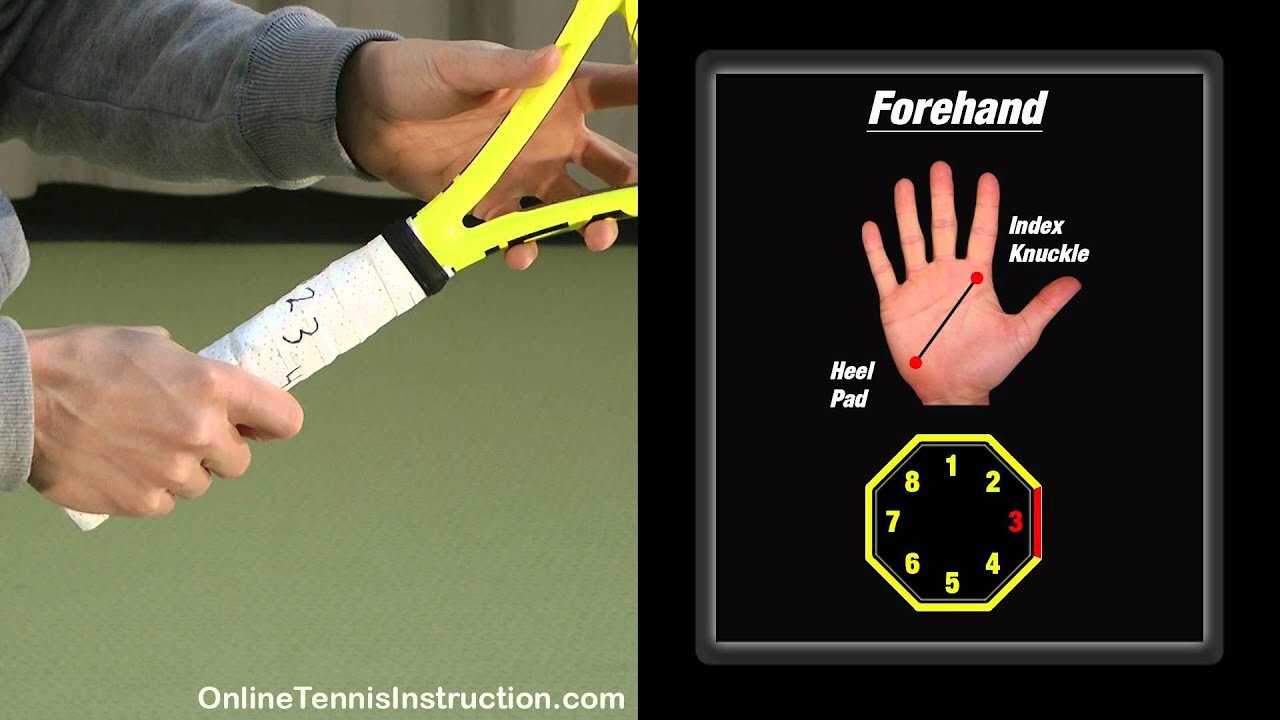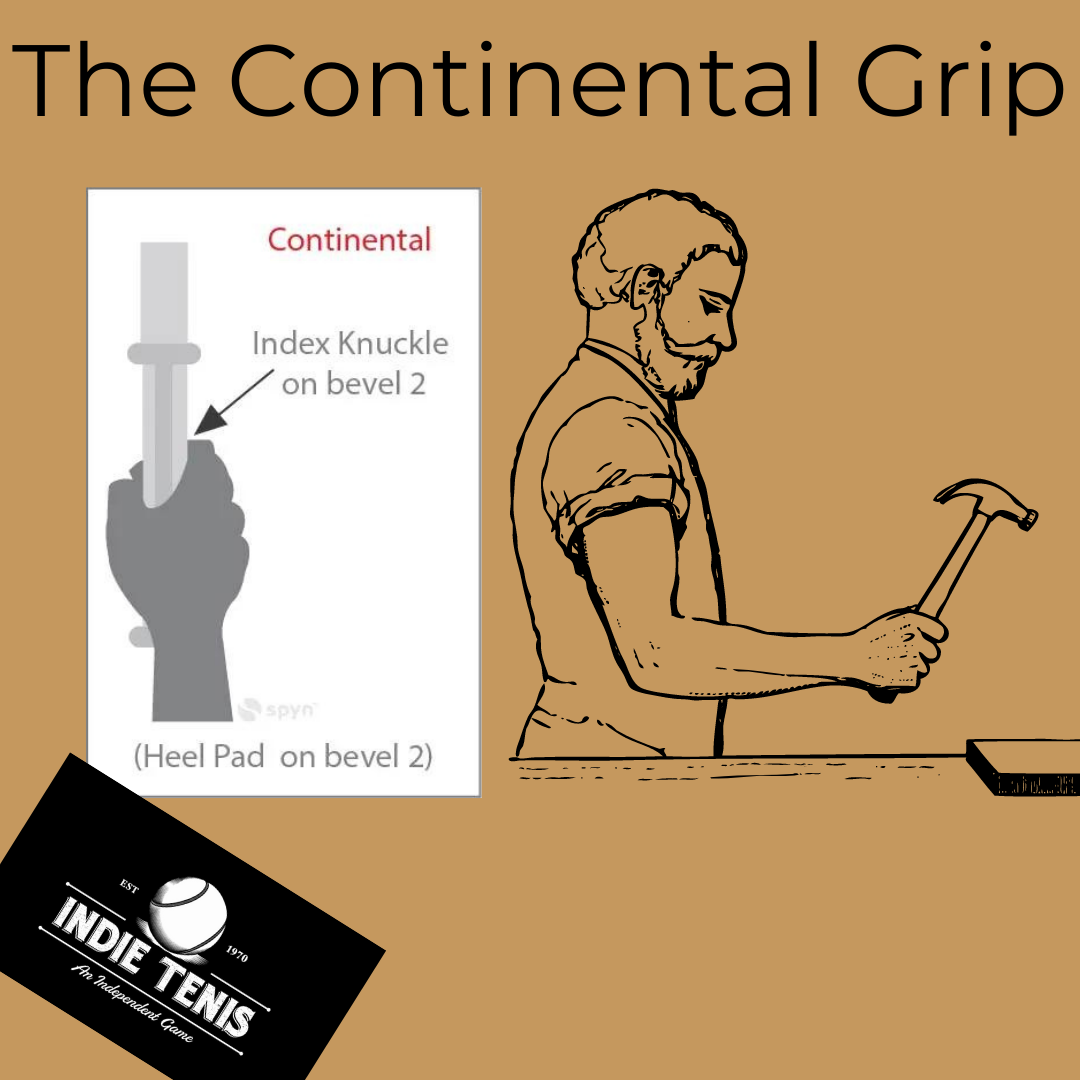Tennis Grips for Beginners: Give yourself a leg up from the start
So, diving into tennis, and grips are all the buzz, right? The whole, "What grip are you using?" and, "Look at these cool new grips," chatter can be a bit much, especially when you're just starting out. You don't want to admit you're a bit lost, but the confusion is real, and the context doesn't always help. No worries, though. Let's unravel the grip mystery right here.
Let's focus on the grips you need to actually hit that tennis ball – your playing grip. It's all about where you place your hand on those eight slanted bevels on the racket handle, gearing up for a specific shot. We're talking more than one grip because, trust me, you’ll want more than one. Different playing grips mean more fun & variety on court, and here's why.
These two essential grips; the eastern and continental grip are the building blocks, the foundation of your tennis game. Whether you're a beginner or gunning for advanced levels, you've got to get cozy with them if you plan on becoming a player🌱.
Tennis grips dictate how your hand sits on those eight bevels, and each grip tweaks how the racket strings behave, creating distinct shots in tennis.
Now, many shots are pulled off with the continental tennis grip, a classic go-to. But for beginners, finding success often starts with a comfy eastern forehand grip. As you step up your game, expect a shift to a semi-western forehand grip to dial in that spin.
Pro Tip: 🌅
Adult tennis camps by playing level & destination for Summer 2024 click here.
Junior tennis camps Summer 2024 click here.
Free Beginner online tennis course can be found here.
Confused around the different tennis grips?
Tennis grips are positions you place your hand on the racket handle’s 8 bevels to hit a particular shot. (i.e. a semi-western grip is a popular forehand grip used to hit topspin. An eastern grip is great for beginners & Roger Federer alike (though his is a slightly modified eastern grip) to hit through a ball deep into the court. You might use a different grip for a drop shot then you do for a serve. Tennis grips should be learned well as foundations to your game.
Replacement grips: This is the grip that came with your tennis racket from the manufacturer. It is a thicker - black grip that can be replaced from time to time. You can have it done professionally or yourself.
Over grip: A grip you’ll change often to keep your original manufacturer grip in good shape. Sweat, dirt and the elements can damage your original grip. These grips come in different colors & designs, are inexpensive and easy to apply yourself.
Your grip size is how your hand measures around the width of the racket handle.
Now that we’ve cleared up the myriad of grips you hear around the water cooler. Let’s focus on your playing grips. The ones you’ll hit the ball with.
The Basics: Forehand to Backhand
Eastern Grip: Let's nail down the basics. Take your hitting hand and locate that trusty base index finger knuckle. Now, slide that powerhouse knuckle onto bevel #3. If you're starting fresh, don't hesitate to jot down the numbers on each bevel. White over-grips, like the one above, are perfect for this. Think of it as your cheat sheet during the early learning phase – a little guide on your racket.
Why this grip? Well, that index knuckle is your powerhouse, your source of power on the court. And let's face it, comfort is key, so find that sweet spot.
This grip sets you up to square off with the ball and deliver a killer drive, sending a deep ball sailing to your opponent's side. Trust me, you want that!
Quick stat: About 70% of your shots will be forehands. So, having a reliable and comfortable grip for your forehand is very important. But here's the real talk – don't sleep on the continental grip! It's not just a sidekick. It's your lightsaber on court, adding a whole new dimension to your game.
Embrace it early, and your tennis game will thank you later.
“Nothing focuses the mind like surprise. ”
Continental Grip: Let's talk about the game-changer, the Continental Grip. Picture your right-hand base knuckle finding its cozy spot on bevel #2. Now, I won't lie; this grip might feel a bit awkward initially – ask any player, and they'll likely nod in agreement. But here's the golden ticket – embrace it from the get-go as part of your foundation, and it becomes second nature, no more overthinking.
Some folks call it THE HAMMER GRIP (or chopper grip) because it feel like you’re holding a hammer in your hand. Unconventional, but trust me, it will change your game and halt you early on without it.
Sure, it will feel odd at first. You could pull off a decent two-handed backhand with a double eastern grip, but my strong recommendation is the continental grip. Why? Well, when the time comes to unleash your skills in volleys, serves, slices, and those sneaky drop shots, the continental grip is your ticket to success.
Pros: Versatility is its middle name. A must for volleys, serves, and slices.
Cons: No top spin here, and you might sacrifice a bit of power, but the trade-off is worth it for the versatility it brings to your game.
How to Switch Between the Forehand & Continental on Groundstrokes
How to change grips from your forehand to backhand.
Peak at the video above from my how to play tennis course for beginners. It helps to know what it means to, change grips between shots.
It’s a very subtle hand shift between bevels on the racket’s handle in between shots. It should happen every time you go from a forehand to backhand. At first you might stumble through changing between grips and believe you won’t have the time. But you have plenty of time if you’re seeing the ball early. And it becomes second nature after awhile.
The drill above is called Laterals. You’ll do it all the time in tennis, at every level, country or court surface. Most of the game is side to side, so being comfortable moving laterally is a bonus!
When you hear grip change, don´t think of applying or changing an over-grip or replacement grip on your racket handle. They´re different things - entirely. And it’s got nothing to do with your grip size.
Getting the feel for changing tennis grips in between shots will feel wobbly at the beginning. But I promise you, it becomes so natural you won’t realize you´re doing it after awhile.
The Continental Grip: Life will be boring without it
Continental grip used on the forehand and backhand volley
The Continental Grip: Let's unravel the magic. Why is it crucial on volleys? When you’re at net you need a slightly open racket face. The continental grip is your VIP pass to achieve that. But it's not just about clearing the net; it allows you to undercut the ball, sending it deep and low – a double win!
This grip isn't just for show. It's your secret weapon for drop shots, slice shots, half volleys, the overhead – basically, it's the touch-up artist in your tennis game, the envy of many.
And hold your horses, because the continental grip isn't just a one-trick pony. It's the golden ticket to acing your serve. And we all know your forehand and serve are the heavy hitters in tennis.
Now, imagine the game without this grip in your toolkit. A total snooze fest! Yet, too many adults on my tennis holidays in Mallorca, Spain miss out on this gem. They're stuck, they know it, and frustration creeps in. Let's break free from the grip-less rut and elevate your game!
As you improve your tennis game …
Start with the eastern and continental grips to hit tennis balls and you’re set for awhile before you need to think of adding another grip.
As you advance you’ll want to learn to add in topspin. For that you’ll shift your eastern grip slightly to the right to a semi-western grip. This one’s an easy transition. Nothing will feel as awkward as the continental feels at 1st.
Now you’re armed with the right information to make sense of any tennis grips you hear around the tennis courts. But your playing grips are the important ones!
Take your tennis grips seriously. They enhance your game incredibly and you’ll play much better, faster.✨
And if you’re considering hiring a tennis coach to help you with your game, read this article for how to find the best tennis coach for you here.
And what about you? Are you using the continental grip?
With love from Mallorca~



